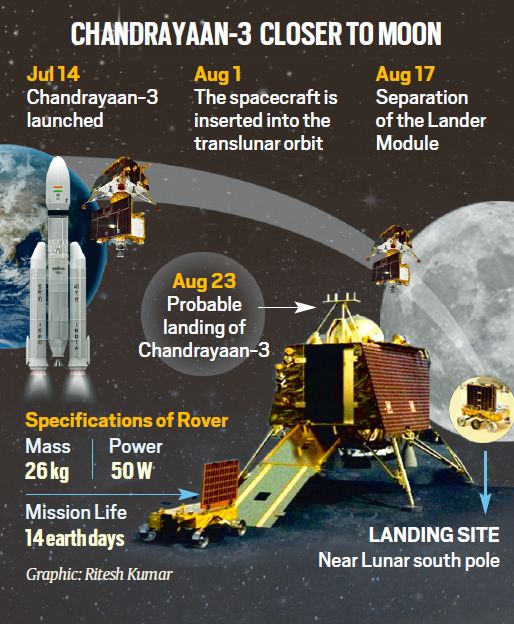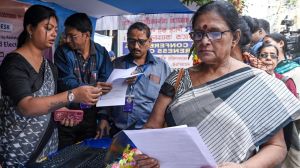
“LM is set to descend to a slightly lower orbit upon a deboosting planned for tomorrow around 1600 Hrs IST,” ISRO said.
The Chandrayaan-3 spacecraft comprises two parts. The Lander Module, which also houses the rover component, is designed to travel to the Moon and is expected to land on the lunar surface on August 23.
The leftover part, the Propulsion Module, whose job was to transport the Lander to the Moon orbit, will continue to go around the Moon for a few months, possibly even years, in an outer orbit.
The remaining journey to the Moon would be made by the Lander Module on its own. As of now, it is in an orbit that is roughly about 150 km from the lunar surface.
The Lander Module is scheduled to make two orbit-reduction manoeuvres over the coming days, first attaining a circular 100 km x 100 km orbit, then coming down further into a 100 km x 30 km orbit.
It is from here that the Lander will begin its final descent to make a touchdown on the Moon next Wednesday. Before that, all the instruments on board the Lander will be activated and tested to check whether they are functioning normally.

Story continues below this ad
A successful mission this time would mean India’s entry into a small club of nations who have achieved the feat, the previous three being the US, the former Soviet Union and China.
The Propulsion Module, in the meanwhile, will continue to go around the Moon for an as yet unspecified period of time.
ExplainedThe race to Moon’s south
Russia’s Luna 25 mission entered the lunar orbit Wednesday and is in a position to make a landing on August 21, two days ahead of the currently scheduled landing time of the Indian lander. Both missions are supposed to land in the higher altitudes of the Moon — Chandrayaan-3 at around 69 degrees south latitude and Luna 25 a little further south, at around 72 degrees latitude. All previous missions to land on the Moon have touched down near its equator.
Initially, the mission life of the Propulsion Module was supposed to be three to six months, but ISRO said Thursday that it will “continue its journey in the current orbit for months/years”.
The Propulsion Module of Chandrayaan-3 has been doing the job of the Orbiter component in Chandrayaan-2. It is equipped with one instrument called SHAPE (Spectro-polarimetry of HAbitable Planet Earth) whose job is to make spectroscopic study of the Earth’s atmosphere from that distance, and try to pick up signals that will help scientists understand the markers of life on planets outside our solar system.
Story continues below this ad
ISRO highlighted the fact that India now has three spacecraft going around the Moon. The Orbiters from Chandrayaan-1 and Chandrayaan-2 are still in their orbits, and are now joined by the Propulsion Module of Chandrayaan-3.










